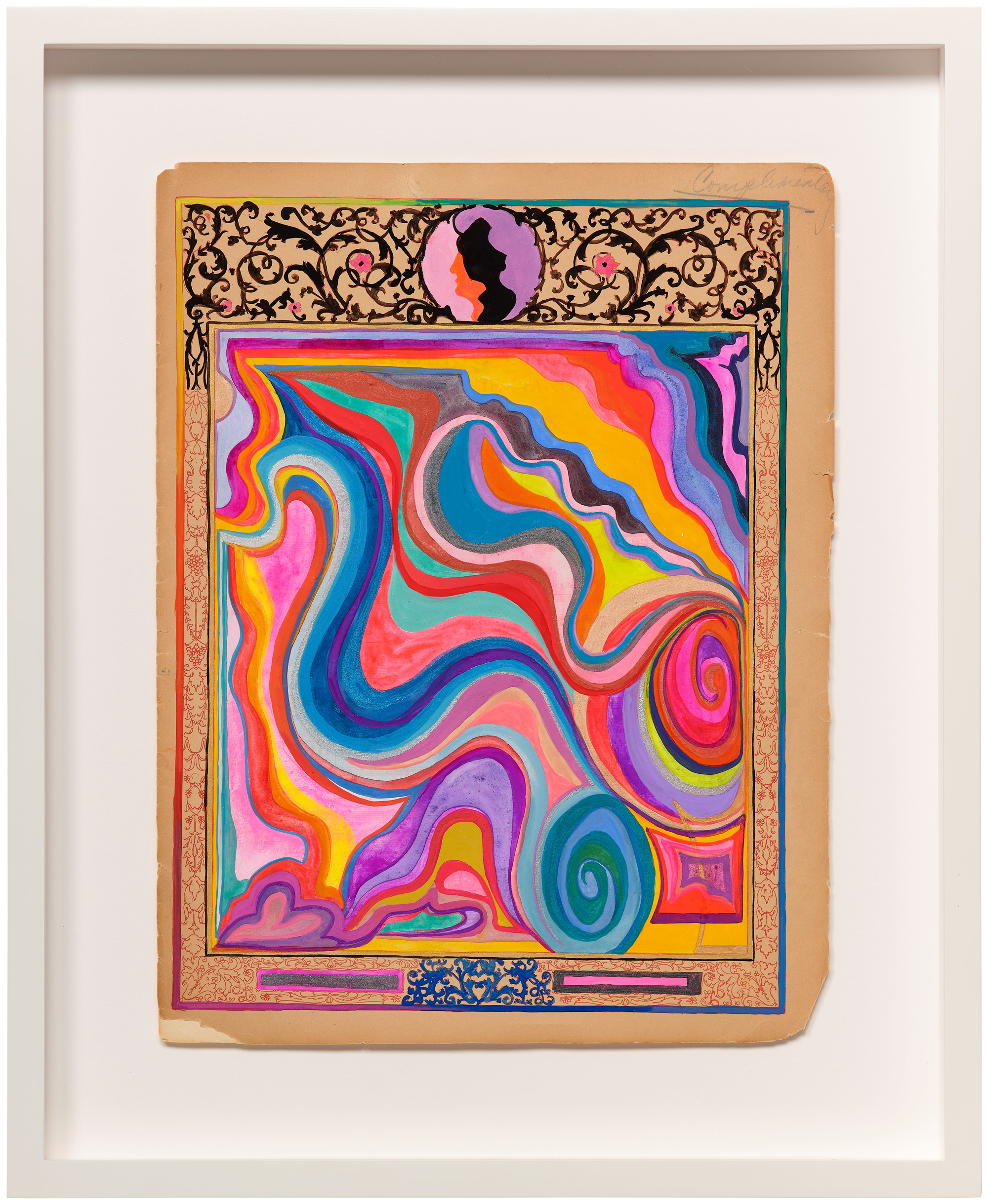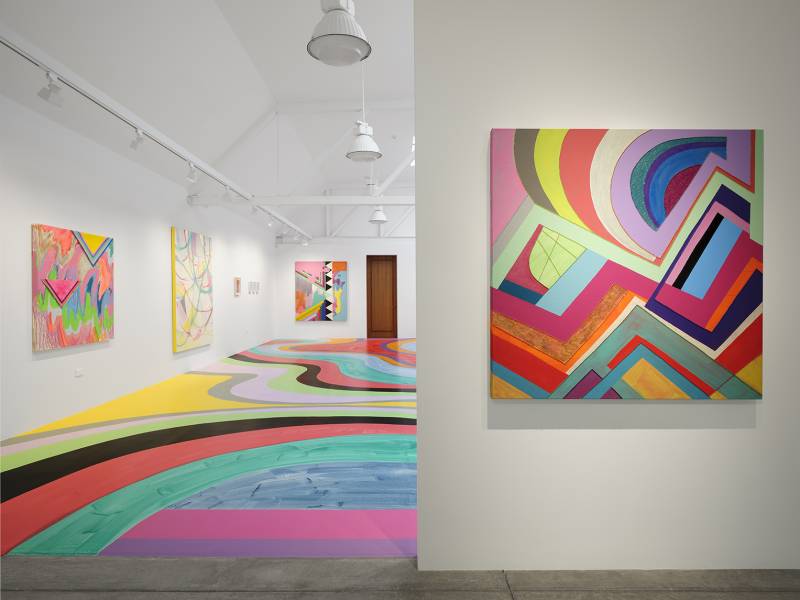Mill Valley is not a typical destination for contemporary art, but neither does it seem like a totally unexpected place to find a gallery. Maybe it all depends on where you’re coming from. For locals, it makes perfect sense to stop by Anthony Meier’s gallery on the leafy, pedestrian-friendly block of Throckmorton Avenue. For those of us coming from elsewhere, the spare white storefront currently filled with rainbow-hued art offers a narrow jolt of visual excitement against a backdrop of weathered wooden shingles and brick facades.
Sarah Cain’s show, which includes paintings on canvas, embellished dollar bills and a gallery floor covered in rivers of color, is in no way subtle (the Los Angeles artist regularly deploys fluorescent hues, glitter and beads). But neither is the grouping so discordant as to make one want to shy away. The work, as the show’s title suggests, is riotous, but quietly so: a Quiet Riot.
In one of the gallery’s street-facing windows, Cain first slows eastbound foot traffic with a canvas suspended by wires; Hello there is a floral burst of curlicues on a lavender ground. That leads to the gallery entrance, where visitors are met by another window display: dangling, gently twisting strips of vertical paper, each decorated with its own set of wavy rays, concentric rectangles, zig-zags and triangles.

These are dollar bills, all titled $ talisman, all with a small element of the original currency peeking through. It’s usually a tiny eye (either George’s or the Eye of Providence), surrounded by Cain’s otherwise opaque brushstrokes of buoyant color. Silver or gold leaf gives a hint to the material’s original function. Cain started making these talismans during the 2008 economic downturn as gifts for friends and family, lucky charms that might bring about a financial reversal. Transmuted into art, they have certainly become much more valuable.
Cain has one other piece in the show that uses existing printed material as its starting point: Effortless Action, an acrylic and gouache work on found sheet music. She responds to the page’s graphic elements in some places, then completely obliterates the underlying information in others. The result is a visual rendering of the experience of playing or listening to particularly transportative music — a liquid light show captured and put down in paint.

With that musical reference, I feel like I have to mention the other Quiet Riot, the 1970s metal band (also from Los Angeles) that played songs like “Cum on Feel the Noize” and “Metal Health (Bang Your Head).” While there’s certainly glam elements to Cain’s work — the sparkle, boisterous colors and iridescence — metal doesn’t feel like the appropriate soundtrack to this decidedly cheerful installation.



